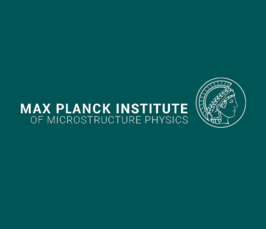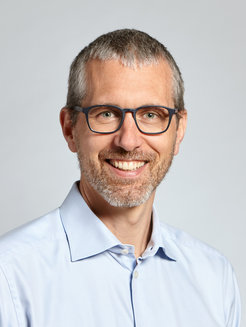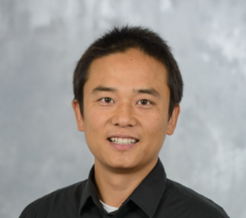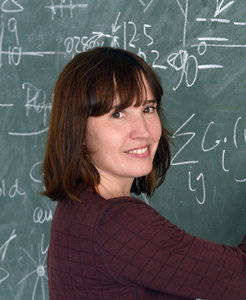Workshop on “Transformational Materials III”
Workshop
- Date: Mar 23, 2022
- Time: 10:00 AM - 02:10 PM (Local Time Germany)
- Speakers: Sebastian Huber, Binghai Yan, Maia G. Vergniory
- Location: Max-Planck-Institut für Mikrostrukturphysik, Weinberg 2, 06120 Halle (Saale)
- Room: Lecture Hall (limited seats) and Online / Please click here to register in advance

PROGRAM
10:00 am - Introduction
10:10 am - Chirality, topology, and spin in DNA-like chiral materials - Binghai Yan
11:10 am - Topological materials for future technologies - Maia G. Vergniory
12:10 pm - Lunch Break
01:10 pm - From topology to applications with mechanical metamaterials - Sebastian Huber
From topology to applications with mechanical metamaterials
Abstract
Geometry can be harnessed to imprint mechanical behavior onto devices that go beyond those of their building blocks. In this talk I will show how we explored the frontiers of topological band theory with such metamaterials and highlight which elements we had to add to the toolbox of metamaterials design. Harnessing the power of these new strategies I will show how we could design a fabricate a device that addresses always-on challenges of IOT devices which spend most of their lifetime idle, but consume power to listen to a wake-up signal.
Sebastian Huber
Institute for Theoretical Physics, ETH Zurich

Prof. Sebastian Huber studied physics at ETH Zürich where he received his diploma in 2004. After his doctoral studies at ETH Zürich under the supervision of Prof. Gianni Blatter he moved to the Weizmann Institute of Science in Rehovot, Isreal. During his time in Israel he was generously supported by fellowships from the Swiss friends of the Weizmann Institute, the Koshland prize and the Swiss National Science Foundation (SNSF). In 2012 he returned to the Institute for Theoretical Physics at ETH Zürich as an SNSF Professor. In 2018, he won an ERC Consolidator Grant to explore topological mechanical metamaterials. Sebastian Huber's research interest are centered around the theoretical and experimental investigation of classical topological wave phenomena as well as the application of information theory and machine learning to the foundations of quantum statistical many-body systems.
Chirality, Topology, and Spin in DNA-like Chiral Materials
Abstract

In chemistry and biochemistry, chirality is the geometric asymmetry of a large group of molecules with a non-superposable mirror image, either left- or right-handed. In physics, chirality usually refers to the locking of spin and momentum, for example, in Weyl fermions and neutrinos. Although chirality represents seemingly unrelated characters in different fields, recent experiments have revealed an unexpected correlation between chiral geometry and electron spin.
We discover an orbital-momentum locking in the band structure of the chiral material, a topological property induced by the structural chirality. We found that this orbital texture enables the chiral molecule to polarize the quantum orbital and induces spin polarization in the presence spin–orbit coupling. Our findings explain the mysterious magnetoresistance observed in spin-charge transport via DNA-type chiral molecules. The chiral orbital texture can also lead to switchable circular light emission in organic LEDs. Beyond chiral molecules, we anticipate that the orbital polarization effect could induce spin-selective phenomena in emerging materials such as the twisted bilayer graphene.
References
[1] Y Liu, J Xiao, J Koo, B Yan, Nature Mater. 20 (5), 638-644(2021).
[2] Y Liu, T Holder, B Yan, The Innovation 2 (1), 100085 (2021).
[3] J Xiao, B Yan, arXiv:2201.03623 (2022).
Binghai Yan
Weizmann Institute of Science, Israel

Binghai Yan is an Associate Professor at the Weizmann Institute of Science, Israel. He is a theoretical physicist and currently interested in topological materials and chiral materials. After completing his PhD at Tsinghua University in 2008, he worked as a Humboldt postdoc at Bremen University and later a postdoc at Stanford University. He was a group leader in the Max Planck Institute for Chemical Physics during 2012-2016 and started his current position at the Weizmann Institute since 2017. He was awarded the ARCHES Prize by Minerva Foundation in Germany in 2013 and the Israel Physical Society Prize for Young Scientist in 2017. He was recognized as a “highly-cited researcher” in 2019-2021.
Topological materials for future technologies
Abstract
Quantum materials are a collection of atoms with interacting electrons and nuclei displaying emergent behaviour and topological properties—properties robust to local defects. The past two decades has witnessed an explosion in the field of topological materials: from weak interacting electrons to strongly correlated ones, topological materials represent one of the most exciting application for future technologies. High performance electronics, quantum information or ultrafast spintronics are just a few of the possible technologies that can be developed based on these materials. In this talk I will discuss the route to go from pure mathematical prediction of topological properties, through high through-put materials search to device fabrication, in equilibrium and out of equilibrium conditions. I will discuss both topological insulators, in non magnetic and magnetic phases as well as topological (chiral) semimetals using the the modern theory of topological band structure—Topological Quantum Chemistry — built upon symmetry-based considerations and complemented with chemical theories of bonding, ionization, and covalence. Consequently, it describes the universal global properties of all possible band structures and materials. Beyond the single particle picture, I will present our formalism based on Green’s functions aiming to discover topological correlated phases in materials displaying electronic entanglement, such as Mott phases. I will finish my talk by discussing some directions for non-equilibrium materials, in particular laser pumped materials with an emphasis on using selective excitation of phonon modes to control magnetic properties and induce topological changes in electronic band structure.
Maia G. Vergniory
Max Planck Institute for the Chemical Physics of Solids, Dresden, Germany

Maia G. Vergniory received her doctorate with “A cum lauea” from the University of the Basque Country in Spain in 2008 and joined the Lawrence Berkeley National Laboratory in the US as postdoctoral fellow. After three years she moved to Max Planck Institute of Microstructure Physics for a second postdoc. She won L’Oreal award for Women in Science in 2017 and the Ikerbasque award in 2019. Since 2021, she is a W2 professor at the Max Planck Institute for the Chemical Physics of Solids in Dresden.



